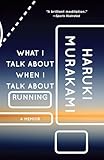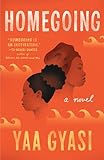This year, especially the tail end of it, has been an embarrassment of riches when it comes to good reading. I’ve felt sort of like how I feel at a dessert buffet—pressed to try everything, distressed that I can’t possibly have room for it all, and urged to make space to just enjoy what I can without being sorrowful over what I can’t. This is especially the case because in 2017 I was pushing to complete two books of my own—Electric Arches, which I was editing throughout February, and my second book When the Bell Stops Ringing: Race, History, and Discourse Amid Chicago’s School Closures, which I have been writing since last fall in a process that feels roughly like army crawling across a gravel floor. Given that—and the overall dismal state of affairs beyond my own front door—I suppose I could have spent the year bent on escapism. Instead, I found myself drawn to authors whose work could sharpen my thinking about the world’s miseries rather than pretending to offer me an exit route away from them. Who knows why. I spent a February in Georgia revisiting Patricia Smith’s incredible collection Blood Dazzler as I thought about the ways poetry can help us document and respond to horrific social failures. The book is a phenomenally imaginative recounting of the Katrina aftermath and it’s helped me think through what documentation looks like in my own work.
 After this year, when people ask me if I’ve read What I Talk About When I Talk About Running, I can finally say an enthusiastic yes! Since I’m a fan of Haruki Murakami’s work and a runner, I get that question fairly often and have always felt a little chagrined about it. What an odd and compelling book. Like any great book about the daily routines of a disciplined person who is very good at what they do, it has lots of relevance for people who are not runners or writers, because really it’s about setting oneself toward a seemingly ridiculous task and making it happen. I ran two half-marathons this year (my knees are not happy about it) and I found myself internally fixating on Murakami’s image of the body not as an extension of the self but as a machine that I’m tasked with operating, easing its reticent mechanics into one more step.
After this year, when people ask me if I’ve read What I Talk About When I Talk About Running, I can finally say an enthusiastic yes! Since I’m a fan of Haruki Murakami’s work and a runner, I get that question fairly often and have always felt a little chagrined about it. What an odd and compelling book. Like any great book about the daily routines of a disciplined person who is very good at what they do, it has lots of relevance for people who are not runners or writers, because really it’s about setting oneself toward a seemingly ridiculous task and making it happen. I ran two half-marathons this year (my knees are not happy about it) and I found myself internally fixating on Murakami’s image of the body not as an extension of the self but as a machine that I’m tasked with operating, easing its reticent mechanics into one more step.

 I also made time for Homegoing by Yaa Gyasi this year, and it made me think about the way our tender places can be linked to trauma that lies beyond our immediate scope of knowing. It made me think about the nature of diaspora a little differently, the nature of kinship, and the silent wounds we care from year to year without ever knowing who hurt us.
I also made time for Homegoing by Yaa Gyasi this year, and it made me think about the way our tender places can be linked to trauma that lies beyond our immediate scope of knowing. It made me think about the nature of diaspora a little differently, the nature of kinship, and the silent wounds we care from year to year without ever knowing who hurt us.
The brilliant Safia Elhillo gave us The January Children this year. It’s a book that offers so much formal innovation and a new way of using music and popular stardom as an access point for thinking about memory and loss—both in the sense of losing something and of being perennially lost, suspended between here and there, unable to ground one’s feet for long. It’s a theme Safia has long explored in a way that has earned her a space as an incredibly important contemporary poet, and this collection was right on time.
 Parable of the Sower, man. Parable of the dang sower. This book really messed me up this year (in the best possible way). Octavia Butler’s work is so prescient, and—beyond the “ain’t it spooky” comparisons many have drawn between the waking nightmare of 2017 and the world of the novel, which was written in 1993—leaves us with lots of questions about the kind of world we want to live in and some provocative emotional tools for how we might get there. It’s also just a fast-paced, engaging narrative work.
Parable of the Sower, man. Parable of the dang sower. This book really messed me up this year (in the best possible way). Octavia Butler’s work is so prescient, and—beyond the “ain’t it spooky” comparisons many have drawn between the waking nightmare of 2017 and the world of the novel, which was written in 1993—leaves us with lots of questions about the kind of world we want to live in and some provocative emotional tools for how we might get there. It’s also just a fast-paced, engaging narrative work.
More from A Year in Reading 2017
Don’t miss: A Year in Reading 2016, 2015, 2014, 2013, 2012, 2011, 2010, 2009, 2008, 2007, 2006, 2005









